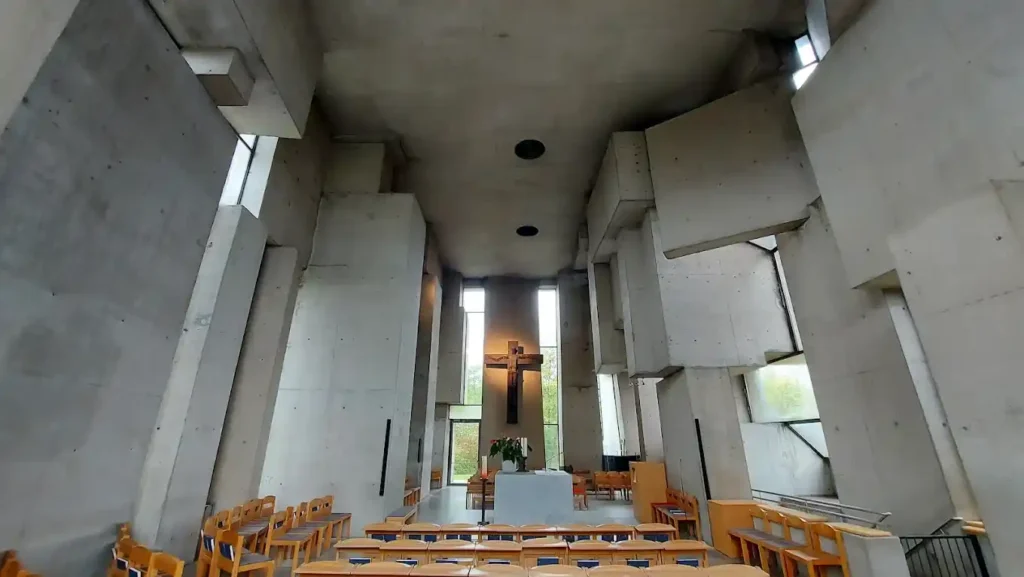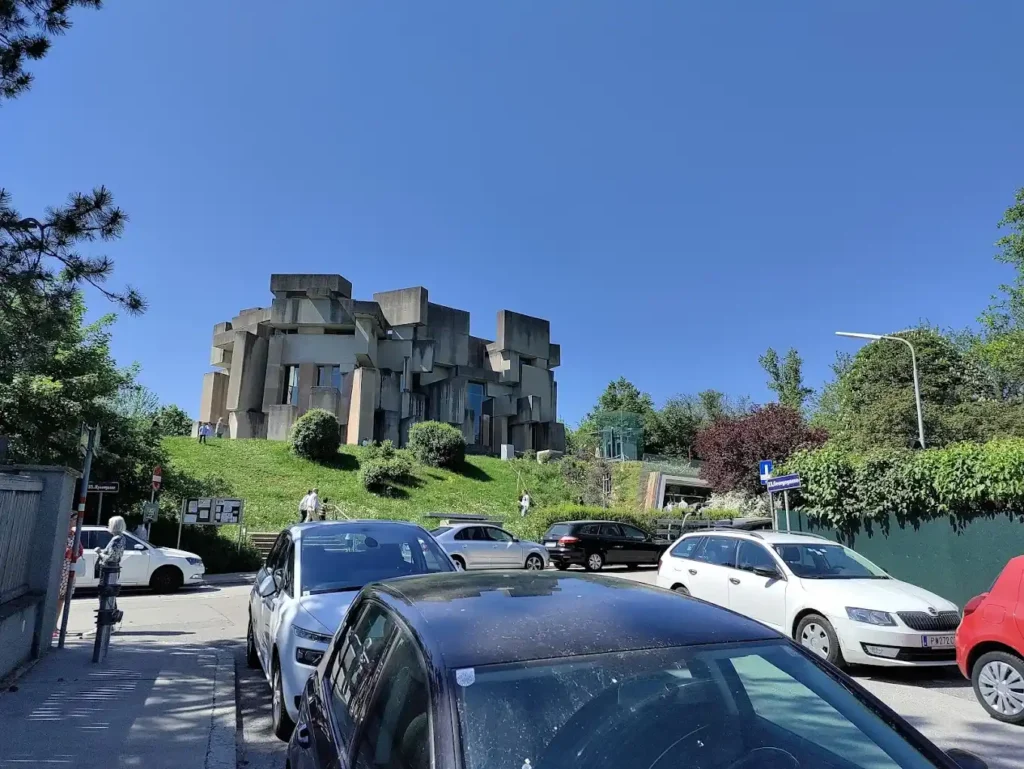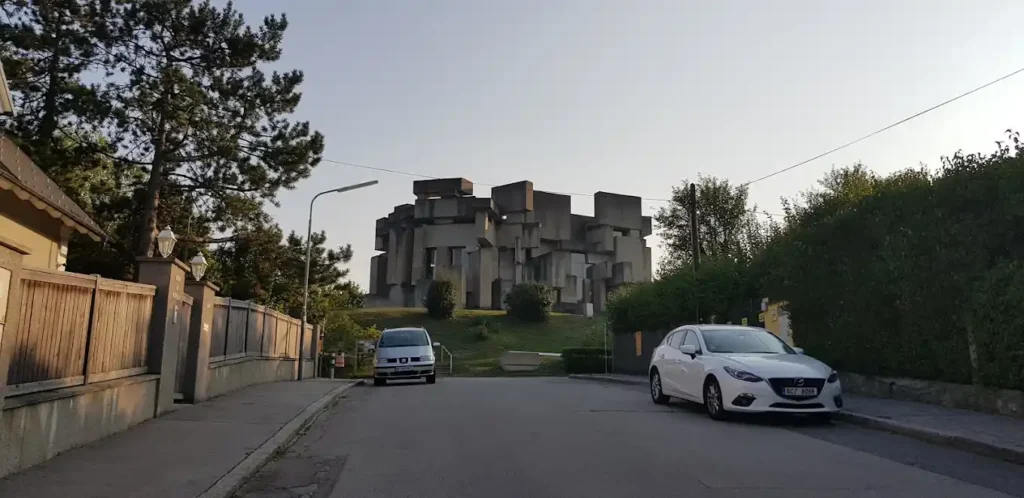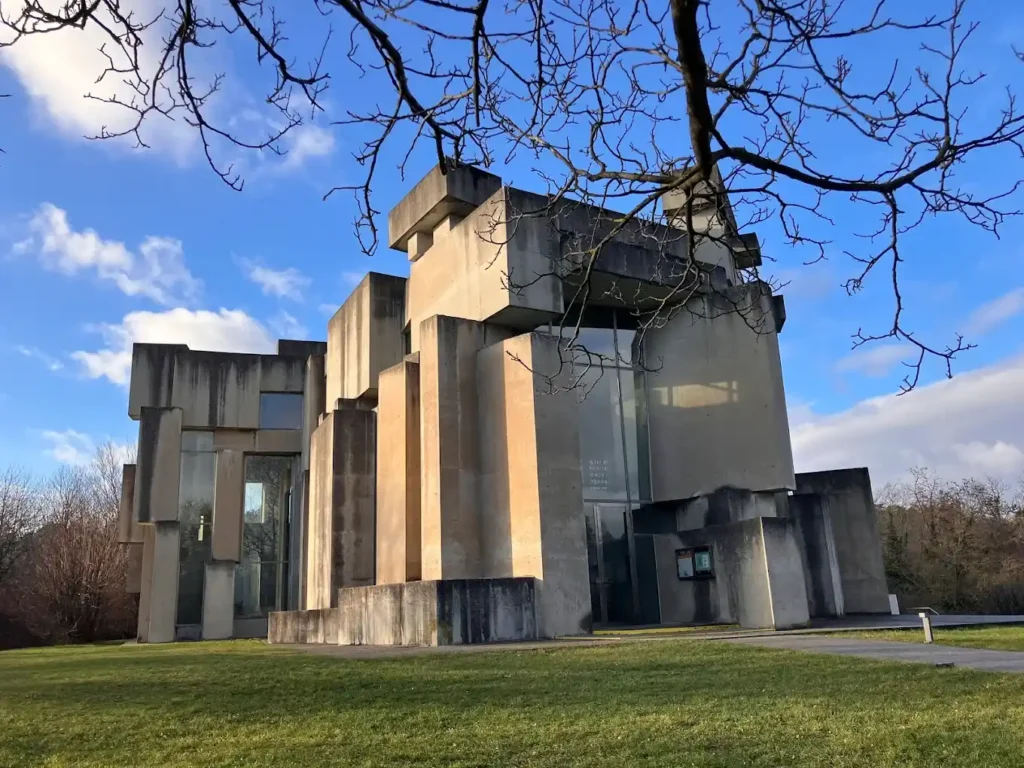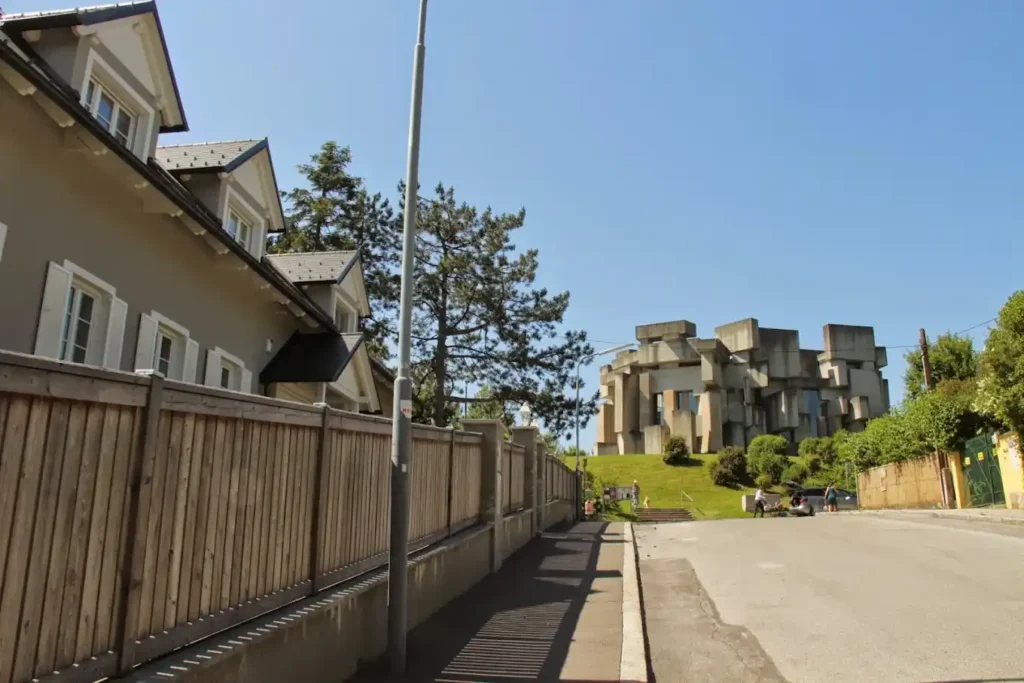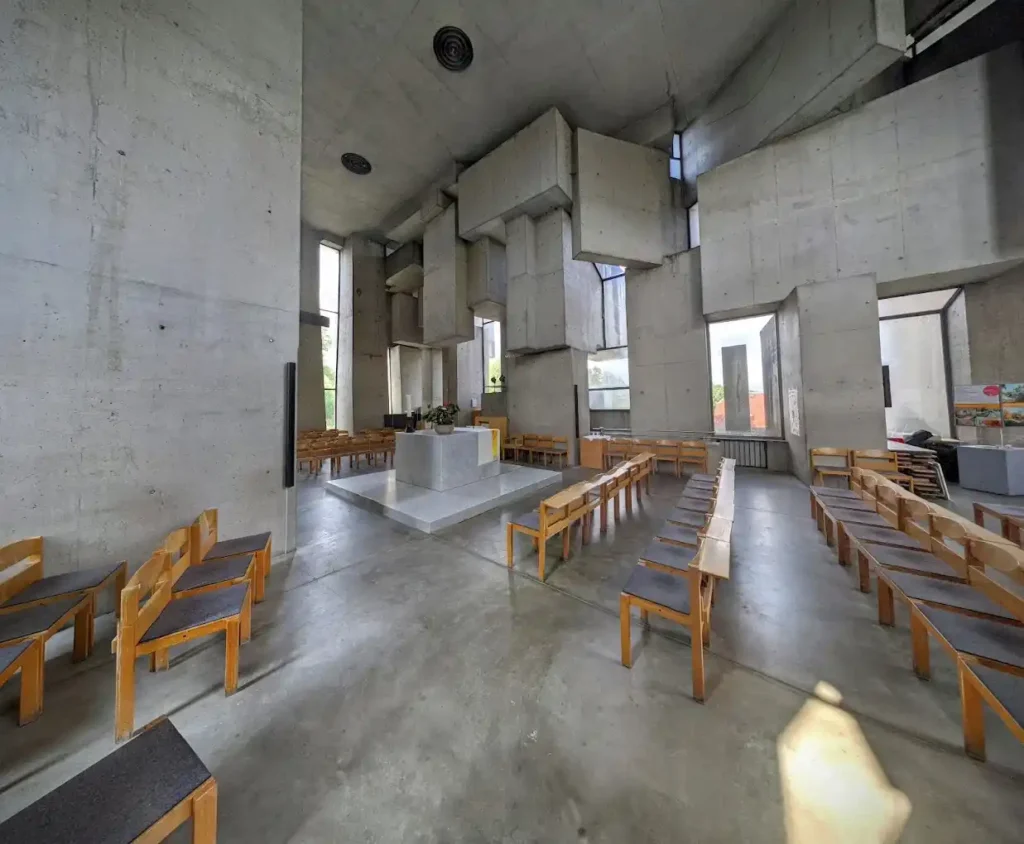At the top of the Georgenberg hill in Vienna’s 23rd district stands one of the most radical religious buildings of the 20th century: the Church of the Most Holy Trinity, more commonly known as the Wotruba Church. At first glance, it resembles a chaotic stack of massive stones. There are no towers or steeples, no defined front façade, no religious symbols. Just 152 exposed concrete blocks, stacked in an irregular but deliberate formation, creating a church like no other.
A sculptor’s vision for a place of worship
This building was designed by Fritz Wotruba, a renowned Austrian sculptor with no formal training in architecture and no affiliation with the Catholic Church. In 1964, he was invited to design a Carmelite convent and church on the outskirts of Vienna. He accepted the challenge enthusiastically and, in 1967, presented a scale-free plaster model made up entirely of geometric volumes. When the convent project was cancelled for internal Church reasons, the decision was made to build just the church in a new location within Vienna.
To bring this sculptural vision to life, Wotruba collaborated with architect Fritz Gerhard Mayr, who adapted the block design to meet structural and technical requirements without compromising its artistic essence.
A livable sculpture
The final result is a building that fits squarely within the brutalist movement, yet behaves like a monumental sculpture. Brutalism is characterized by raw concrete surfaces, lack of ornamentation, and a monolithic presence—qualities the Wotruba Church embodies. But it goes further.
Each of the 152 concrete blocks is unique. The smallest measures 0.84 cubic meters and weighs 1.84 tons. The largest reaches 64 cubic meters and 141 tons, while the tallest block rises 13.1 meters above ground level. There is no intentional front side: Wotruba wanted the building to be experienced from all angles, like a freestanding sculpture.
There are also no crosses or conventional religious signs visible from the outside. Instead, the church offers a space for silence, reflection, and abstract spiritual experience.
A surprising contrast of light and weight
Although the exterior appears massive and closed-off, the interior is unexpectedly bright and open. Undecorated glass windows, placed between the concrete blocks, allow beams of light to filter in, overlapping and creating shifting patterns across the interior. This dance of light transforms the space throughout the day and seasons.
The altar, made of artificial marble, is flanked by bronze chandeliers, and the back wall features a bronze crucifix, a cast based on a design Wotruba originally made for the Hofkirche in Bruchsal, Germany. The rest of the liturgical furnishings were also created from earlier models by Wotruba, ensuring harmony between art and space.
From controversy to cultural symbol
At the time of its design, the church sparked intense debate. Critics questioned its cost, its unconventional form, and whether a non-believer should design a sacred space. Yet supporters saw it as a bold statement of modern Austrian art and identity. When it was finally inaugurated on October 24, 1976, the event attracted artists, politicians, and cultural leaders—many of whom had once doubted the project.
Today, the Church of the Most Holy Trinity is far more than a place of worship. It serves as a community gathering point, hosting concerts, theater, ballet, and public events. Its grassy surroundings are used by locals and tourists alike for picnics and photography, and its striking appearance makes it a popular Instagram backdrop.
But beyond its photogenic angles, the Wotruba Church remains a powerful exploration of the boundary between sculpture, architecture, and spirituality. Wotruba didn’t just build a church—he built a question in stone: where does sculpture end and architecture begin?Today, we call it “archisculpture”, and this church is one of its boldest and most enduring examples.
How to get to Wotruba Church?
To get to the Wotruba Church, you can’t rely on Vienna’s tourist buses, as they don’t stop there. The most direct way by public transport is to take bus 60A and get off at the Kaserngasse or Lindauergasse stops. Another option, though a bit further away, is to take tram 60 from the Hietzing station (U4 metro line) to Maurer Lange Gasse, which offers a more scenic route but involves a bit more walking.
